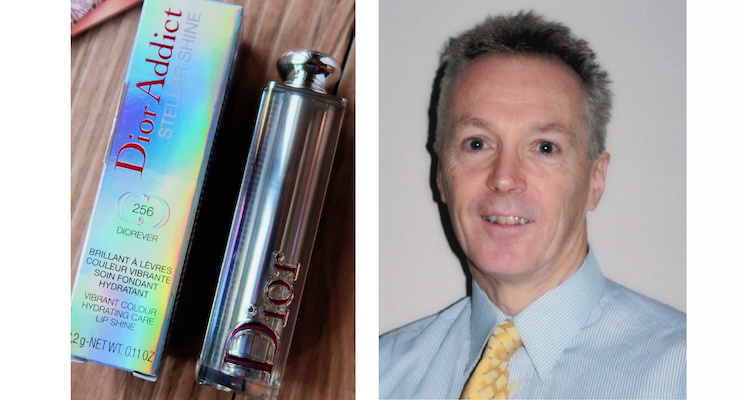Dr. Paul Dunn, chair of the International Hologram Manufacturers Association11.05.20
It’s estimated that more than 2.2 million fake body care items, including cosmetics and perfumes, were seized in the UK alone between 2017 - 2018, according to the Intellectual Property Office (IP) crime and enforcement data.
Indeed, during the same time period, cosmetics were the third most-investigated counterfeit product behind cigarettes and alcohol. Perfume was fifth behind footwear. According to the OECD, over 63% of counterfeit items accounted for, originate from China.
With global sales of cosmetics expected to reach $87bn by 2025, the market is enormous and beauty sales remain relatively resistant to economic downturns. Unfortunately, the sector is also attractive to criminals looking to tap into demand for counterfeit makeup, skin care, devices, tools and fragrances, which can be quick and relatively easy to copy. Indeed, once presented in quality packaging, the counterfeits can be almost impossible to distinguish from the real thing. And they can be produced in bulk, while margins are high and brand owners do all the marketing for you.
The health risks to consumers who use fake products can also be very real. Horror stories are reported around the world of the use of fake cosmetics as the counterfeiters are under no obligation or oversight to adhere to any health guidelines, resulting in potentially lethal products.
This summer, police in Los Angeles seized almost $1m worth of counterfeit cosmetics. So, it’s important that consumers should only purchase cosmetics from trustworthy companies and authorized retail outlets.
Brand owners and product manufacturers should also be proactive in tackling threats. Stepping up plans to invest in advanced authentication and verification technologies to protect profits and corporate reputation, particularly at a time when there’s multiple threats from the growth of e-commerce counterfeiting during the Covid-19 crisis.
A study by a community media platform revealed that 20% of products sold online are fake. In the U.S., almost 70% of consumers have expressed worries about the pandemic driving online sale in bogus or sub-standard quality products.
Catching the Eye
Hand-in-hand with product protection, cosmetic manufacturers also face the considerable challenge of capturing customer attention in seconds to secure or grow market share—so the eye-catching appeal of holographics offers a visual advantage in helping to meet these challenges by giving products a highly distinctive decorative edge over competitors.Continuing advances in film coating and production technology have opened the door for ever more innovative opportunities for embossed holographic materials used in packaging, while a wide variety of specialist origination techniques offer an infinite variety of colorful 3D visual effects, ranging from the bright and stunning to more subtle graphic features.
For example, materials and additives company Eastman has partnered with Groupe Rocher to produce an eye-catching, stylish cosmetics’ compact that offers consumers the reassurance that they're purchasing a bona fide product.
Beauty & Fragrance Brands Turn To Holography
A walk [or virtual walk] down the cosmetics aisles of any store or department will reveal a wide selection of products whose manufacturers have turned to holography as an integral part of their strategy to catch the eye of discerning consumers.Procter & Gamble has for instance, used holographic effects packaging to enhance its high volume CoverGirl cosmetics and secure brand provenance. In this case, the holographic effect is achieved through the use of aluminized foil rather than stick on label while the company’s Olay Definity line of skin care products catches the eye thanks to impactful labels incorporating holograms.
Dior and Givenchy, whose Addict (shown above) and Very Irresistible products respectively (both women and men’s versions) are presented in holographic boxes while Lancôme has been using holographic packaging for its popular Magnifique brand for several years, which uses a diffractive stripe effect to provide a sense of movement to attract the eye.
Mariah Carey’s Lollipop Bling perfume packaging also features holograms to give POS displays that added edge whereas Britney Spears’ Radiance makes use of the print to accent the holography. All have been designed using diffractive technology to draw the eye and ensure that products stand out on retail counters.
Holography's Role in Decorating & Securing
But packaging is more than just the outer carton, and holography has a role to play in decorating and securing the inner packaging of the product as well. Any surface that can hold the hundreds of millions of microscopic fringes that control the diffractive colors and depth of the hologram can be converted into a packaging material.Holographic laminate pouches that are both the container and packaging are a secure and eye-catching tool for cosmetics as are holographic shrink sleeves that protect against attempts to tamper with or re-use cosmetic closures. Holographic shrink labels are also finding applications where applying adhesive to the product is problematic.
The security value of holographic technology in packaging is of growing interest. Developments enable technology to scan the surface of products to generate an intrinsic “fingerprint” of each item—using a secure database and field scanners.
Each product can be authenticated anywhere in the world and tracked through the entire supply chain. This suggests a growing realization that the multi-billion dollar beauty and cosmetics industry is learning from other sectors such as healthcare and pharmaceuticals, embracing advanced holographic technology in packaging as part of a mainstream approach to marketing and product integrity.
Certainly, the evidence suggests that these is huge potential for holographic packaging to add even more shelf appeal as companies recognize and seize upon the benefits provided. Indeed, the anti-counterfeit and security benefits of holography will continue to push the boundaries for cosmetic and beauty product packaging. So, instead of using “off the shelf” wallpaper patterns, active discussion between the holographic designers and the packaging designers can open a new world of profitable possibilities. The time is ripe to seize the opportunity.




























